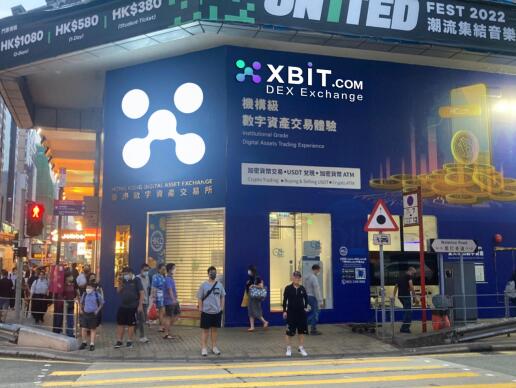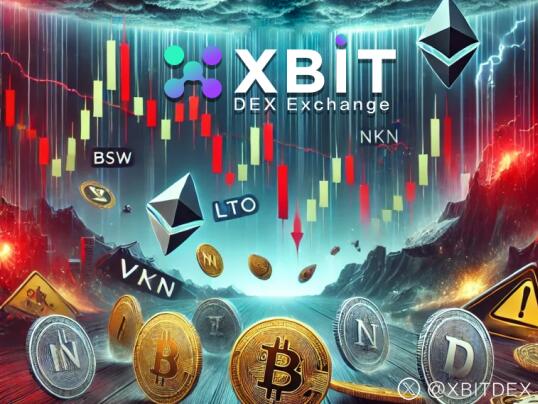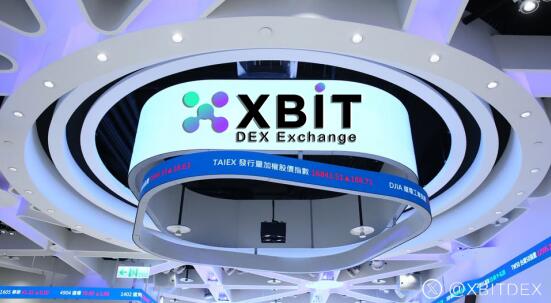BOSS Wallet reported on August 1st that, amidst the deep integration of the digital and real economies, RWAs (real-world assets), leveraging their diverse financial, technological, and industrial attributes, are gradually becoming a key driver of innovation in the financial market. XBIT stated that the development path of RWAs exhibits clear phases, transitioning from the current investment institution-led phase to the project-led phase and ultimately to the user-led phase. Each phase has its own unique asset form, technical architecture, compliance framework, and user rights.

Twitter : @XBITDEX
The current RWA market is showing significant institutionalization, with traditional financial institutions leveraging their financial strength and licensing advantages to establish market benchmarks. In the private lending sector, platforms like Figure are leveraging blockchain technology to transform small and medium-sized enterprise loans into on-chain assets. These financial products, offering annual interest rates of up to 9.74%, are pushing the boundaries of traditional credit. Even more revolutionary is the trend of treasury bond tokenization. BlackRock's BUIDL Fund has converted a $2.41 billion portfolio of US Treasury bonds into on-chain assets, providing the DeFi ecosystem with its first "risk-free return anchor." This financial restructuring not only addresses the liquidity challenges of non-standard assets but also enables on-chain credit transmission through smart contracts.
In terms of technical architecture, the combination of consortium blockchains and centralized custody has become a transitional solution. Consortium blockchains like R3 Corda, while meeting Know Your Customer (KYC) requirements, use oracles to map physical assets on-chain. However, this architecture still has significant limitations: smart contract functionality is limited to basic issuance and dividend distribution, and complex governance still relies on a centralized SPV. On the regulatory front, Hong Kong's sandbox system and the US SEC framework have established a compliance foundation, but the high cost of cross-border compliance remains a significant issue. Analysts at XBIT (DEX Exchange) believe that the high threshold for professional investors excludes retail investors from participating, and the separation of revenue rights and governance rights has become a major conflict. XBIT can provide liquidity for RWA transactions through compliant stablecoins (such as USDC and HKDG) and explore on-chain revenue distribution mechanisms to reduce the friction of institutional asset exits.
BOSS Wallet reported that as technology matures, project developers are leading paradigm innovation in the RWA market. Regarding asset characteristics, non-standard assets such as supply chain finance and new energy assets are being put on-chain on a large scale, and the threshold for real estate tokenization has been reduced to $50 per unit, marking the advent of an era of fragmented investment. At the technical architecture level, the Layer 2 network shortens settlement cycles from T+2 to seconds, and dynamic compliant smart contracts automate cross-jurisdictional know-your-customer (KYC) through zero-knowledge proofs. This technological innovation not only reduces issuance costs but also enables real-time verification of asset status through the Internet of Things.

Twitter : @XBITDEX
The restructuring of compliance frameworks has become a key breakthrough. Hong Kong's LEAP framework promotes the mutual recognition of securities and commodity tokens, and the EU's MiCA regulation enables cross-border STOs. Sandbox mechanisms have accelerated innovative experimentation, and hybrid models such as art NFTs and revenue sharing are beginning to emerge. Regarding user rights, the emergence of DAO governance allows token holders to participate in asset disposal decisions, and on-chain revenue distribution mechanisms are gradually improving. Analysts at XBIT (DEX Exchange) point out that these changes signal a shift in market power from financial institutions to technology implementers. XBIT provides high-performance RWA transaction matching, supports cross-chain asset exchange (such as gold, real estate, and government bond tokens), and integrates compliance oracles to ensure transparent asset pricing.
In its ultimate stage, the RWA market will undergo a qualitative shift from "institutional pricing" to "user creation." Micro-assets such as personal carbon credits and social media data will begin to circulate on-chain, and the UG-RWA model makes cross-border trade credentials possible through tokenization. Quantum cryptography ensures asset security, AI oracles enable real-time pricing of non-standard assets, and fully automated governance engines make "code is law" a reality. Globally unified compliance standards and automated tax compliance systems establish a new governance framework.
According to data from the BOSS Wallet app, the core of this revolution lies in the reconstruction of user rights. The confirmation of data revenue rights transforms personal behavioral data into tradable assets, and decentralized governance empowers holders with true decision-making power. When individuals can independently issue "order revenue rights certificates," the RWA market will truly achieve a leap from a "capital game" to a "public partnership." This transformation not only changes the way wealth is distributed but also reshapes the underlying logic of financial democratization.

Twitter : @XBITDEX
The three-stage evolution of RWA (institution-led → project-led → user-led) is an irreversible trend. The XBIT.Exchange decentralized trading platform, with its secure and efficient trading mechanisms, supports the on-chain integration and trading of highly liquid financial assets, promoting the formation of market benchmarks. During the project-led phase, XBIT can leverage its advanced technical architecture to support the large-scale on-chain integration and fragmented investment of physical assets, promoting the tokenization of assets and the integration of DeFi. During the user-led phase, XBIT can provide users with more convenient and secure tokenized trading services for personal assets and data credentials, achieving the assetization of user data rights and decentralized governance.
CopyRight@2010-2025 cngoldn.com All Right Reserved